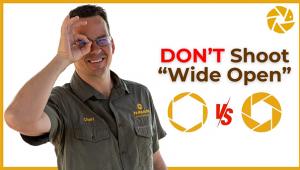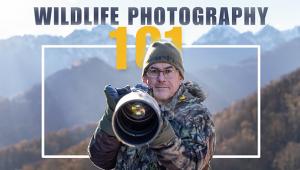Wildlife Photos: The BEST Exposure Mode for Every Subject (VIDEO)

Nailing exposure is often a challenge with all forms of outdoor photography because of ever-changing light, complicated scenes, and a variety of tones from foreground to background. With wildlife subjects this task may require even more thought and precision.
That’s because stationary subjects typically call for a different combination of aperture, shutter speed, and ISO settings than situations than include motion—like birds in flight. And sometimes a static subject suddenly starts to move. What to do? Read on.
Instructor Paul Miguel is a British pro with an eclectic portfolio of landscapes, macro photos, and wildlife imagery. He says, “I use a range of exposure settings in different situations, and often use Auto ISO.

This tutorial for is for beginning wildlife photographers, and it begins with a helpful review of the most common exposure modes. He covers Aperture Priority, Shutter Priority, and the basics of shooting in Manual mode. He then explains when and how he uses each option, depending upon the subject.
Miguel also provides advice for unpredictable conditions like passing mist and rapidly changing light levels. There’s also a helpful discussion of how the exposure mode you choose has implications for the Metering mode employed.
Miguel says his “go-to” exposure mode when shooting wildlife is Aperture Priority, particularly when he’s searching for subjects in an unfamiliar location. In these situations he typically uses the Auto ISO setting for reason he explains.

“What I like about the Aperture Priority mode in combination with Auto ISO,” he says, “is that you can set a fairly wide aperture, and that means the camera automatically sets the fastest shutter speed for a correct exposure.” He also notes that many cameras have a minimum shutter speed option in the menu to minimize inadvertent camera shake caused by a shutter speed that’s too slow.
Miguel discusses the other exposure options available, how to use them, and why it’s often necessary to change your approach in mid-shoot. He also provides photos that illustrate the tips and techniques he describes.
Because Miguel is such a versatile photographer you can find a variety of lessons on his YouTube channel. So make it a point to visit there often, whenever you’re unsure about a particular challenge,
You may also want to check out the tutorial we posted last month from another pro, explaining how to fix underexposed outdoor photos in Lightroom.
- Log in or register to post comments

















































